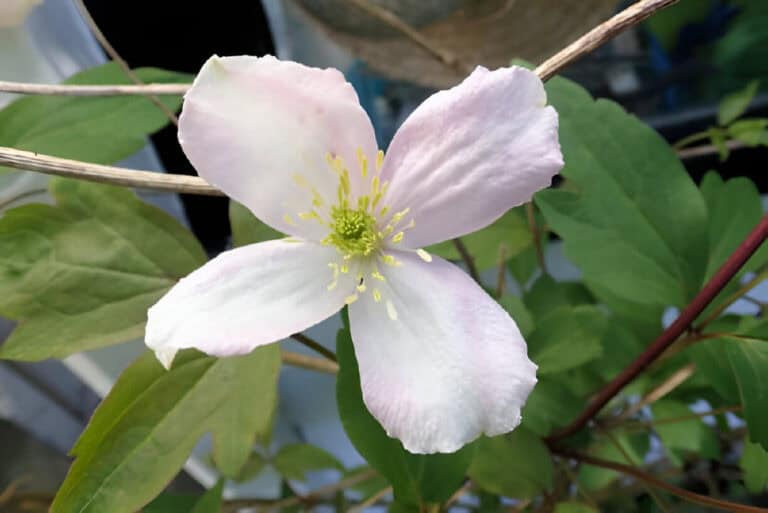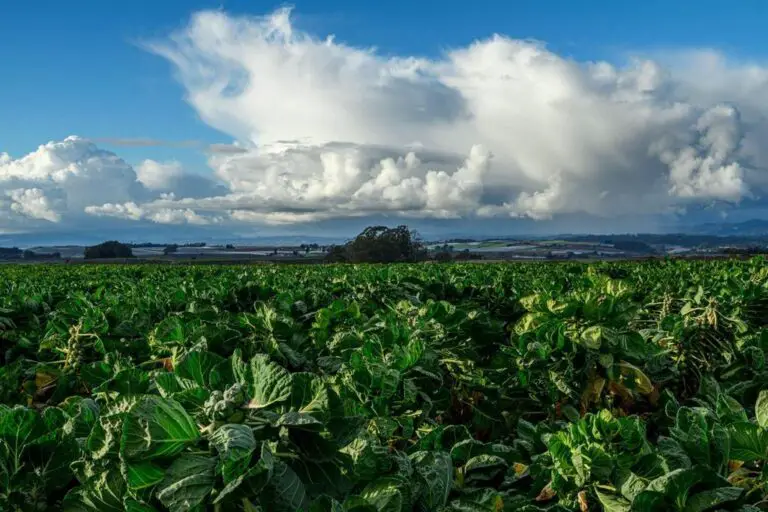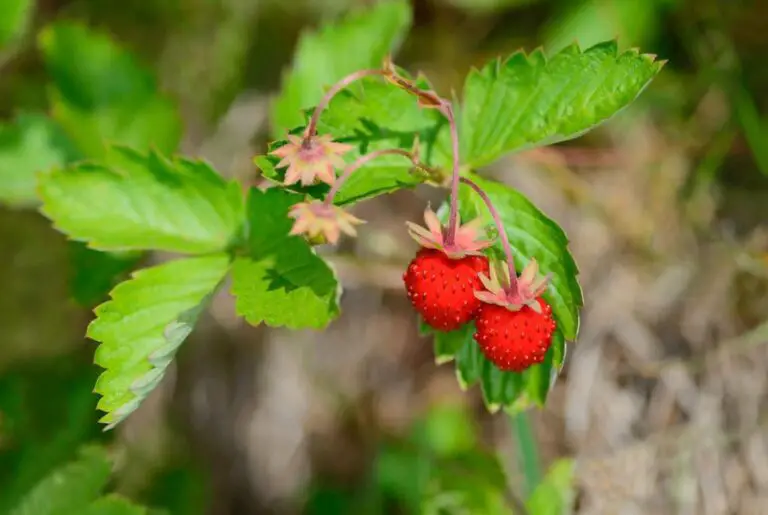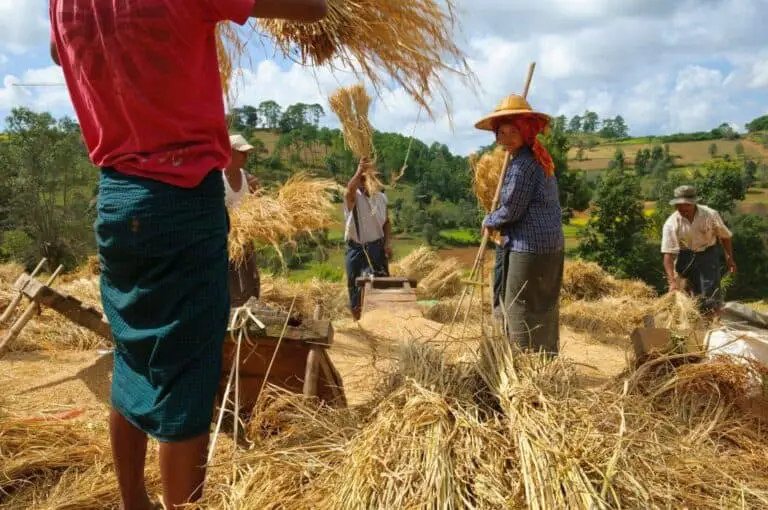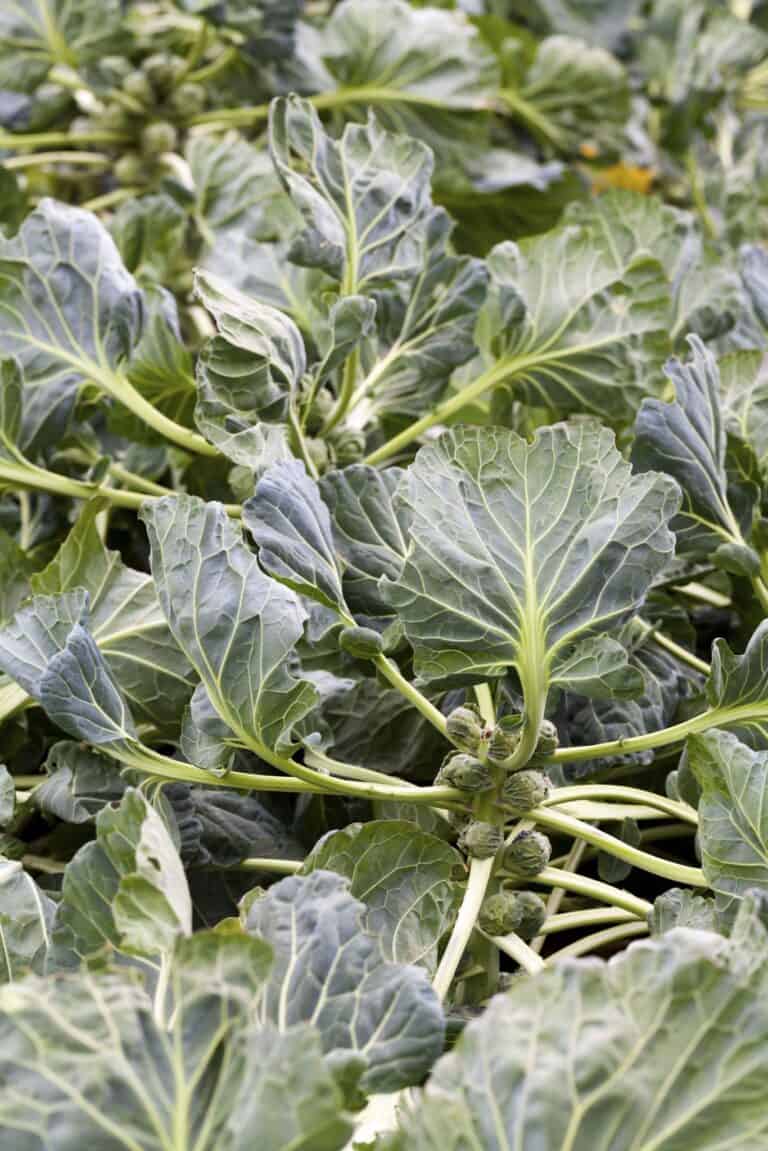Why Are My Brussel Sprouts Opening Up? Opening Up or Breaking Apart?
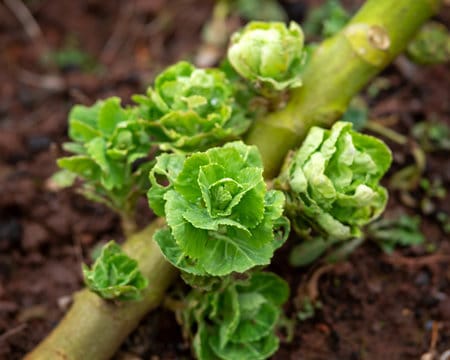
Have you ever eagerly awaited the harvest of your homegrown Brussels sprouts, only to find them opening up or breaking apart? It can be disheartening to see your carefully tended plants yield less-than-perfect results. But fear not, because we’re here to unravel the mystery behind why Brussels sprouts open up and share tips on how to prevent this issue.
Whether you are an experienced gardener or just starting out, understanding sprout opening is essential to growing compact, tasty sprouts.
In this article, we’ll explore the factors that contribute to sprout opening, from natural maturity to environmental conditions and even genetic factors. We’ll delve into the nitty-gritty details and provide you with practical advice to keep your Brussels sprouts intact.
So, let’s dive into the world of Brussels sprouts and discover how to conquer the challenge of sprout opening.
Introduction to Brussels Sprouts
Brussels sprouts, scientifically known as Brassica oleracea var. gemmifera, belong to the Brassicaceae family. This family also includes vegetables like cabbage, kale, and broccoli. They are characterized by their distinctive appearance and unique growth patterns.
They have been cultivated for centuries and are native to Europe. Over time, they have gained popularity worldwide due to their distinctive flavor and numerous health benefits.
Brussels sprouts are a popular and nutritious vegetable that can be a delightful addition to your meals. These small, green orbs are not only tasty but also incredibly versatile in the kitchen. Brussels sprouts are often enjoyed as a side dish, roasted, sautéed, or incorporated into various recipes.
Anatomy of Brussels Sprouts
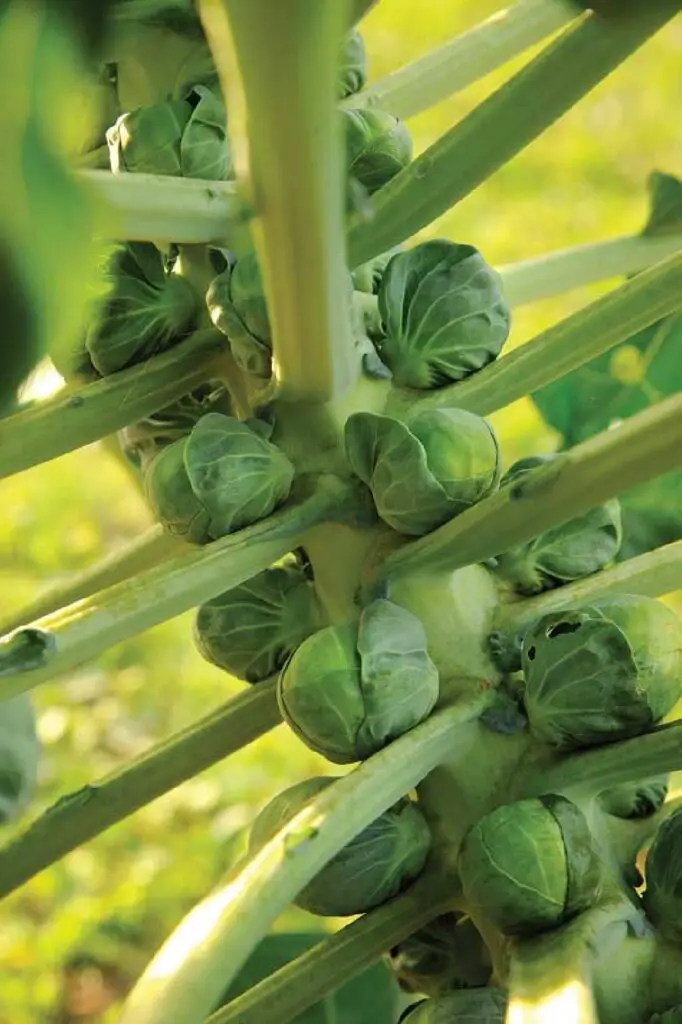
The anatomy of Brussels sprouts plays a crucial role in understanding why they open up as they grow. Brussels sprouts begin their development as small buds that emerge from the thick main stalk of the plant. These buds resemble miniature cabbages in shape and appearance. As the plant grows, the stalks elongate from a compact structure.
Each Brussels sprout consists of layers of leaves that enclose and protect the inner core. The leaves are arranged in a spiral pattern around the central stem, with younger leaves forming closer to the tip of the sprout. As the sprout grows, new leaves are continually added, expanding the size and overall structure of the vegetable.
The tightly packed nature of Brussels sprouts is primarily attributed to the compact arrangement of the leaves and buds. This tight packing helps to protect the developing sprouts and maintain their shape during growth. The leaves serve as a natural shield, preventing external elements from damaging the inner core and maintaining the overall integrity of the sprout.
The Process of Opening Brussel Sprouts
As Brussels sprouts continue to grow, a fascinating phenomenon occurs. The inner core, consisting of the tightly packed layers of leaves, begins to push outward due to the increasing size and pressure from within. This growth force eventually causes the outer layers of leaves to separate and open up, exposing the inner core of the sprout.
The process of opening up is often referred to as “sprouting.” It results in a visible transformation of the tightly packed buds into a more open and spread-out arrangement. This not only changes the physical appearance of the Brussels sprouts but also affects their taste and texture. As the sprouts open up, the leaves become less compact and more tender.
The opening up of Brussels sprouts is a natural part of their growth and maturation process. It signifies that the sprouts have reached a certain stage of brussel sprouts development and are ready for harvesting. Farmers and gardeners often monitor the opening of the sprouts as an indicator of their readiness for consumption.
Why Do Brussels Sprouts Open Up?
Several factors can contribute to the opening or breaking apart of Brussels sprouts. Let’s explore some of the common reasons:
- Maturity: One common reason for sprout opening is maturity. As Brussels sprouts reach their peak, the outer leaves may begin to separate and open up, revealing the inner layers. This is a natural process, and it signifies that the sprouts are fully grown. While they may not look as visually appealing, these sprouts are still perfectly edible and delicious.
- Inconsistent Watering: Irregular watering can also contribute to sprout opening. Brussels sprouts require consistent moisture to develop properly. The sprouts may expand quickly, causing the outer leaves to split and separate, if they experience drought stress then receive a lot of water. To avoid this, ensure that you water your plants regularly and consistently.
- High Temperatures: Excessive heat can be another factor leading to sprout opening. When Brussels sprouts are exposed to prolonged periods of high temperatures, their outer leaves may wilt and separate. This can be especially prevalent during heat waves or hot summers. Consider planting Brussels sprouts during cooler seasons or providing shade during scorching periods to mitigate this issue.
- Pest Infestation: Certain pests, such as aphids or cabbage worms, can also cause sprout opening. These critters feed on the leaves, leading to damage and disruption in the sprout structure. Regularly inspect your plants for any signs of pest infestation and take appropriate measures to control them. Organic methods like handpicking or using insecticidal soap can be effective in managing pests.
- Genetic Factors: Genetics can play a role in sprout opening as well. Some Brussels sprout varieties have a higher tendency to open up than others due to their genetic makeup. When selecting your seeds or transplants, look for varieties known for their tight, compact sprouts. This can help minimize the chances of sprouts opening in your garden.
Nutritional Implications of Opened Brussels Sprouts
When Brussels sprouts open up during their growth process, it is natural to question whether this change in appearance has any impact on their nutritional value.
Fortunately, the nutritional composition of Brussels sprouts remains largely unaffected by their opening up, meaning that you can still benefit from their valuable nutrients regardless of their appearance.
The opening of Brussels sprouts does not significantly alter their nutrient content. While the visual appearance might change, the nutritional value remains intact. The tender leaves exposed when the sprouts open up are still packed with the same vitamins, minerals, and fiber as the tightly closed buds.
To ensure that you retain as much of the nutritional benefits as possible, it is recommended to handle and cook opened Brussels sprouts properly. Cooking methods such as steaming, roasting, or stir-frying can help preserve the nutrients while enhancing the flavors and textures.
Tips to Prevent Sprout Opening
Now that we’ve explored the causes of sprout opening, let’s discuss some practical tips to prevent this issue and ensure your Brussels sprouts stay intact:
- Choose the Right Varieties: As mentioned earlier, selecting Brussels sprout varieties known for their compactness can significantly reduce the chances of sprout opening. Look for varieties such as ‘Catskill’ or ‘Long Island Improved‘ that have a reputation for producing tight, well-formed sprouts.
- Consistent Watering: Watering your Brussels sprouts regularly and consistently is crucial. Provide them with sufficient moisture to promote healthy growth and prevent sprout opening. Aim to keep the soil consistently moist, but not waterlogged. Mulching around the plants can help retain moisture and regulate soil temperature.
- Monitor Temperature: Keep an eye on the temperature and try to avoid extreme heat conditions, as they can contribute to sprout opening. If you live in an area with hot summers, consider planting Brussels sprouts in early spring or fall when temperatures are milder. Providing shade or using row covers during scorching periods can also help protect your plants.
- Pest Control: Regularly inspect your Brussels sprouts for signs of pests and take immediate action if you spot any infestations. Handpick pests like aphids or cabbage worms and destroy them. You can also use insecticidal soaps or organic pest control methods to keep the population in check. By minimizing pest damage, you can prevent sprout opening caused by their feeding.
- Harvest Timely: Harvesting Brussels sprouts at the right time can prevent them from opening up prematurely. Wait until the sprouts are firm and tightly closed before picking them. Start harvesting from the bottom of the stalk, removing the larger, more mature sprouts first, and leave the smaller ones to continue growing. This allows the remaining sprouts to develop fully before harvest.
- Proper Plant Spacing: Adequate spacing between Brussels sprout plants is essential for optimal growth. Overcrowding can restrict air circulation and lead to sprout opening. Follow the recommended spacing guidelines for your chosen variety to provide enough room for the plants to grow without crowding each other.
- Support the Stalks: As the sprouts mature, their weight can cause the stalks to bend or lean, increasing the chances of sprout opening. To prevent this, use stakes or plant supports to provide stability to the stalks. Tie the plants gently to the supports, ensuring they have room to grow but are adequately supported.
Other Cruciferous Vegetables Prone to Opening Up
While Brussels sprouts may be the stars of the show when it comes to opening up, other cruciferous vegetables can also experience similar issues. Here are a few examples and tips to manage them:
- Cauliflower: Cauliflower can develop loose heads or separate into florets if exposed to excessive heat or water stress. To prevent this, harvest when the heads are dense and tight, and provide consistent moisture during growth.
- Cabbage: Cabbage heads can split open if they grow too quickly or are exposed to sudden temperature fluctuations. Maintain consistent watering, and harvest cabbage heads promptly when they reach maturity.
- Broccoli: Broccoli can exhibit loose heads or open florets if not harvested at the right time. Harvest when the central head is fully developed but before it begins to flower. Regularly check for pests and diseases and address them promptly.
By understanding the tendencies of these cruciferous vegetables and implementing proper care and harvesting techniques, you can minimize the occurrence of opening them up and enjoy their deliciousness to the fullest.
Conclusion
The opening up or breaking apart of Brussels sprouts can be attributed to various factors, such as overcooking, underdeveloped buds, environmental conditions, pests, and diseases. By following best practices for harvesting and storing, addressing common pests and diseases, creating an optimal environment, and exploring culinary uses for opened Brussels sprouts, you can overcome these challenges and enjoy delicious sprouts.
Remember, these techniques can also be applied to other cruciferous vegetables to ensure their quality and taste. So, embrace the versatility of Brussels sprouts and let their culinary possibilities inspire your kitchen creations.
FAQs
Are opened Brussels sprouts safe to eat?
Yes, opened Brussels sprouts are safe to eat. Although they may not look as visually appealing as tightly closed sprouts, they are still edible and retain their nutritional value. The taste and texture might not be significantly affected, so you can enjoy them without concern.
Can opened Brussels sprouts be salvaged for cooking?
Absolutely! Opened Brussels sprouts can still be used for cooking. Simply trim off any damaged or loose leaves and proceed with your preferred cooking method. They can be roasted, sautéed, steamed, or incorporated into various recipes just like tightly closed sprouts.
Are opened Brussels sprouts still nutritious?
Yes, opened Brussels sprouts are still nutritious. While the appearance might be different, the nutritional content remains largely unaffected. They are rich in vitamins C and K, fiber, antioxidants, and other essential nutrients. So, enjoy them knowing that you’re still getting the health benefits they offer.
What causes Brussels sprouts to separate into leaves?
Brussels sprouts can separate into leaves due to factors such as maturity, inconsistent watering, high temperatures, and genetic factors. As the sprouts mature, the outer leaves naturally begin to separate. Inconsistent watering or sudden changes in moisture levels can also contribute to leaf separation. High temperatures can cause wilting and separation of the outer leaves. Additionally, certain Brussels sprout varieties have a genetic tendency to separate into leaves.
Are opened Brussels sprouts a sign of spoilage?
Opened Brussels sprouts are not necessarily a sign of spoilage. While they may not have the compact appearance of tightly closed sprouts, they are still safe to eat as long as they are fresh, firm, and show no signs of mold or rot. It’s important to inspect the sprouts for any indications of spoilage before using them in cooking.

